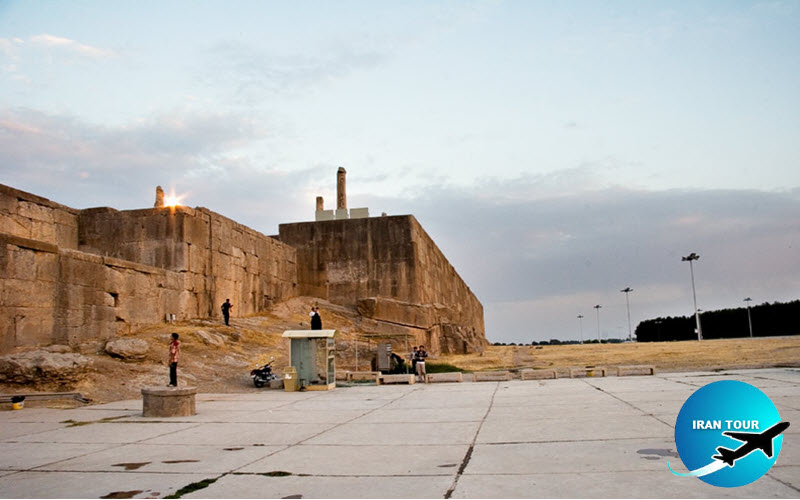Copyright 2020 - 2021 irantour.tours all right reserved
Designed by Behsazanhost
Persepolis Fortifications
Fortifications
The platform of Persepolis was strongly fortified. On the south and west, it was protected by two stone ramparts, which rose several meters above the ground. On the north and east, the fortifications were of mud-brick and included several defensive tiers. They included a very thick foundation wall, which at some points reached a width of 19 m and was composed of a number of parallel ramparts, space between which was filled with sand and rubble. This wall was surmounted by another mudbrick wall about 7 m high. At regular intervals, this wall was reinforced with square towers, which were linked to each other by a corridor sheltered behind yet another wall. Behind the east rampart was a moat, which served both defensive and utilitarian functions, since it also provided a means of draining away from the platform the water which poured down the slope of the Mountain of Mercy. An additional wall was erected along the hill and ran from the northeast to the southeast corners of the platform. Alexander entered Persepolis from the northeastern corner where the mountain and the platform come together.
 |
 |
Some of the fortifications have been excavated and partially restored. Thus, to the east of the Hall of a Hundred Columns, archaeologists have unearthed structures consisting of a number of halls and terraces; the original outline of the buildings is marked off on the ground by brick and clay mounds. These structures are believed to have housed the soldiers' barracks, guardhouses, and sentry posts - which probably accommodated some 3,000 soldiers garrisoned in Persepolis(Achaemenid Army). One of the towers has also been excavated and its stairs restored to provide more convenient access to the royal mausoleums and fortifications on top of the hill. Among the archaeological finds were seven stone plates originally housed in the Treasury, and possibly brought here after the fall of Achaemenian and Persepolis. Four of the plates bore the famous Daivas inscription, an anti-demonic decree issued by Xerxes.
Warning: No images in specified directory. Please check the directory!
Debug: specified directory - https://www.irantour.tours/images//Shiraz/Historicalsites/Persepolis/Fortifications
- Details
- Category: Museums of Shiraz